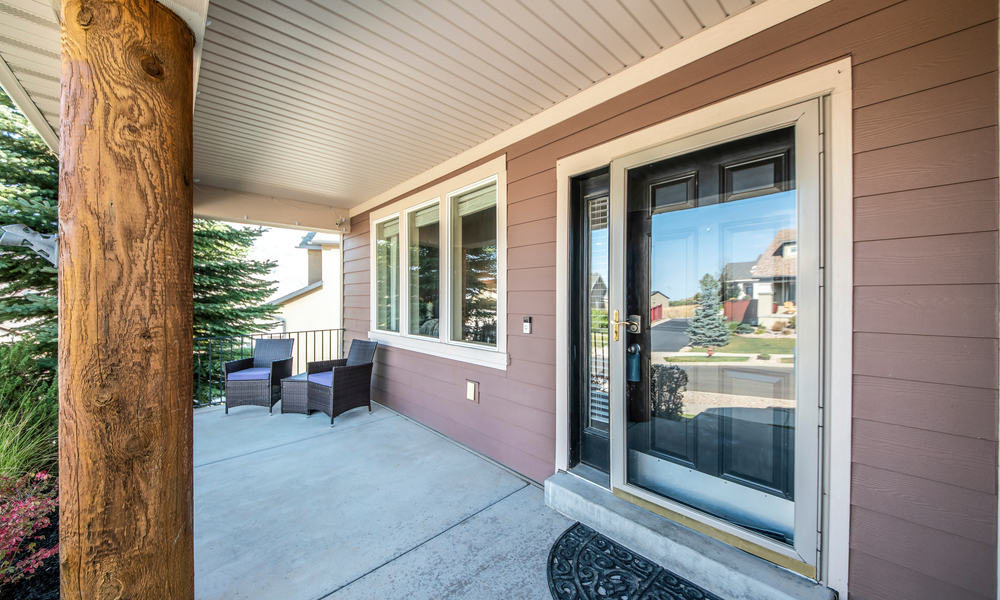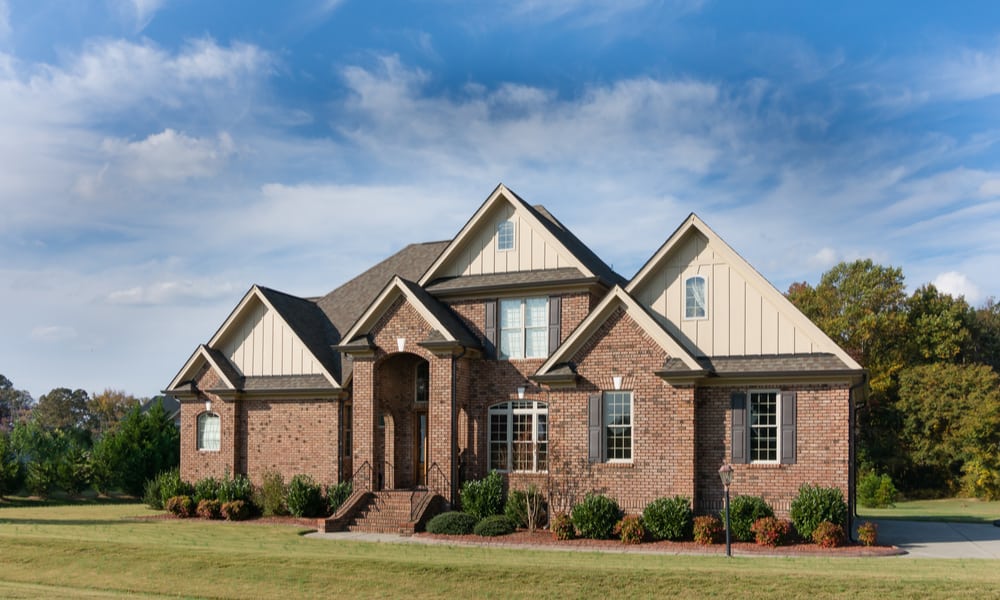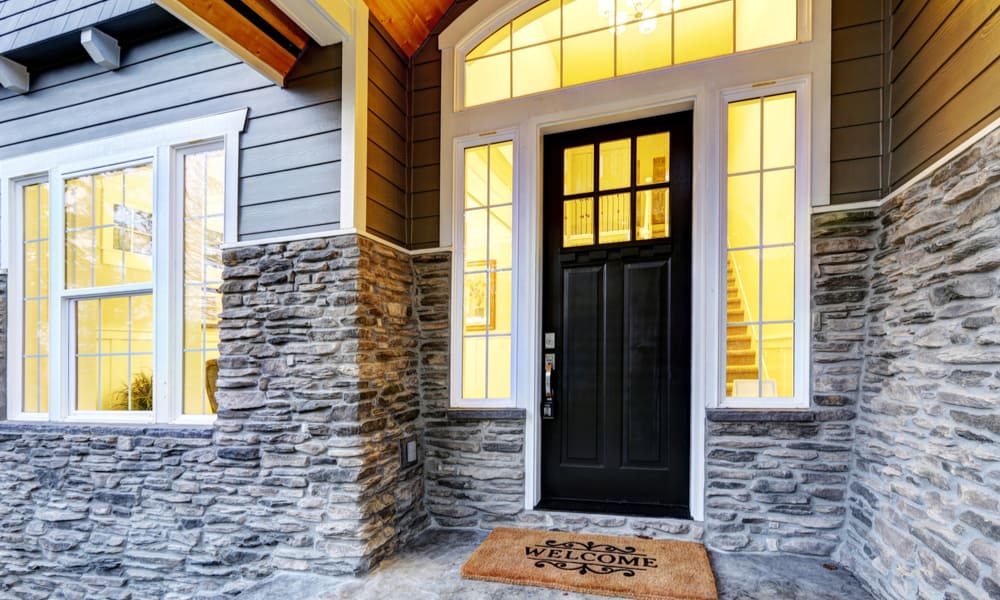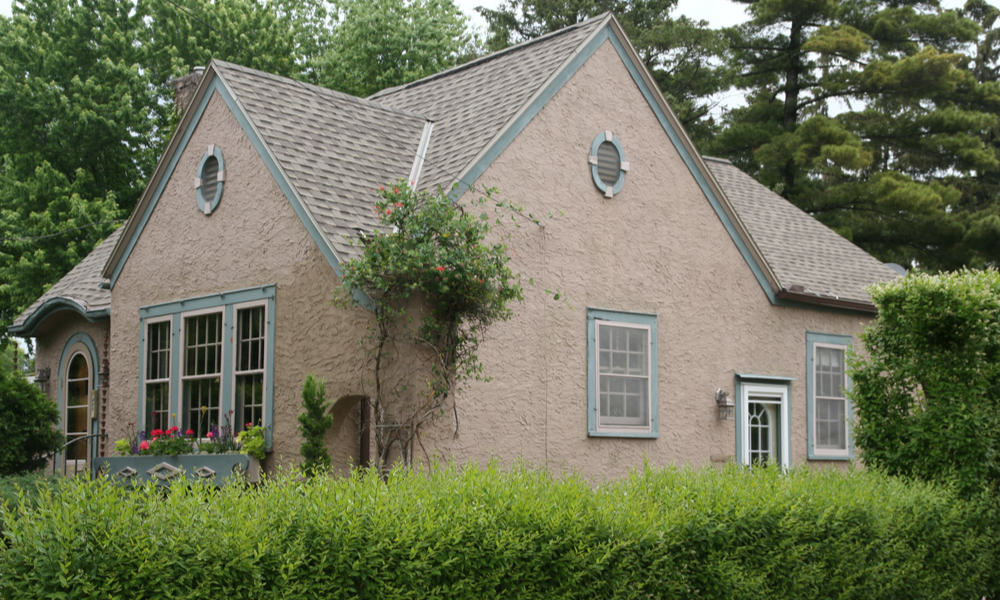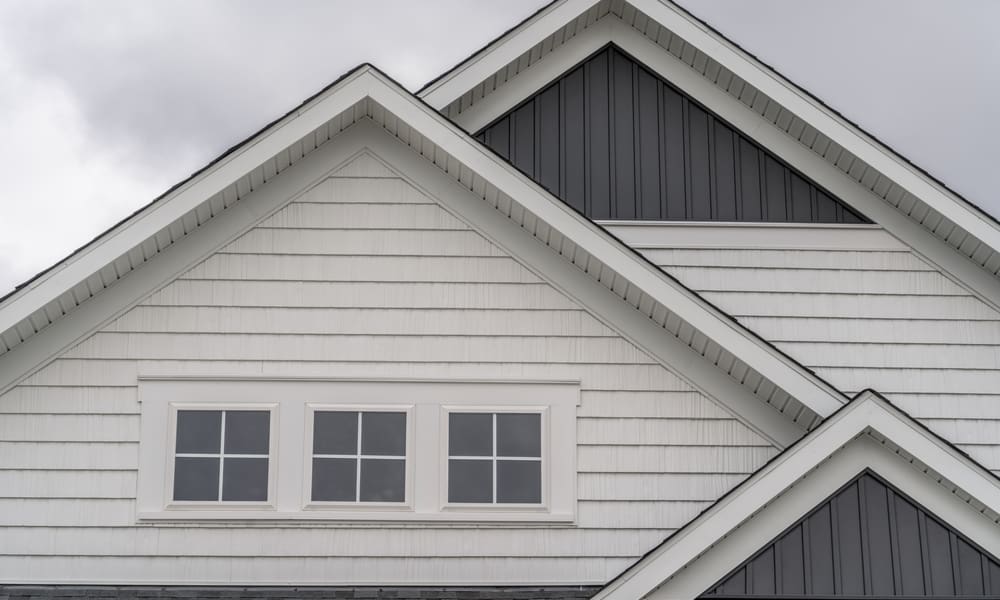Vinyl is among the most popular materials used for house sidings – and for good reason. It’s an inexpensive material that’s extremely versatile and easy to work with, and it also offers an impressive level of durability while requiring only minimal maintenance.
However, many people are increasingly exploring other options, looking for something more original, attractive or sustainable. So for anyone interested in learning about the other choices, here’s are 7 alternatives to vinyl siding to give you an idea of the kind of thing that’s possible.
Top Alternatives to Vinyl Siding
1. Wood
Wood is a classic building material that has been in use for as long as humans have been building shelters. It offers unrivaled natural beauty and an attractive rustic style that many people appreciate. It is also a good ecological option as long as the wood is sustainably sourced.
Since it is easy to work with, it is not difficult to install, making it a suitable DIY option for those with the necessary skills. However, depending on the wood you choose, it can also be expensive – although some wood options are relatively affordable.
This material can potentially last many years, as long as you take proper care of it – but this is also the main problem associated with wood siding.
Maintenance for wood involves repainting or restaining it every couple of years, and it also needs to be protected against termite damage. This means that even once it’s installed, the upkeep of wood siding will continue to cost money, making it a more expensive choice in the longer term.
Not all species of wood are suitable for all climates, so this is something you should check with your builder or supplier before starting the work. When choosing your wood, you should also pay attention to rot resistance as well as its tendency to split, check or cup in the climate where you live.
Finally, one other issue with wood is that it can burn easily, so if there is a fire danger where you live, this may also be something to consider.
2. Engineered wood
If you like the sound of all the positives associated with genuine wood but you want to avoid most of the negatives, engineered wood could be worth thinking about.
Engineered wood is made from wood fibers along with exterior-grade resin, and it is available in a range of different styles, making it even more versatile than the real thing. Some engineered wood is designed for painting while other types feature a ready-made attractive exterior.
Another advantage this material has over real wood is that it is far more affordable, usually costing around half the price. It comes in regular-sized lightweight planks featuring uniform patterning, making it easy to work with, and it doesn’t create dust when cut, so it’s an even more convenient option.
It is an ecological option and requires less maintenance than regular wood. It is also naturally resistant to termites, further reducing the amount you will need to spend on upkeep down the line.
The main downside with engineered wood is that it is considered much less resistant to water than real wood, although this view is becoming a little dated now since modern engineered wood far outperforms the versions of the past.
Also, some might say that although this material creates the same timeless, classic style as authentic wood, it still can’t quite match the natural elegance of the genuine article – but for all the advantages, this is a compromise many people are willing to accept.
3. Brick
If you are looking for the ultimate in durability, brick comes very near the top of the list – although even brick homes eventually deteriorate with time, especially around the mortar joints.
That said, brick is extremely resistant to the elements and will protect you from wind, rain and just about anything else that nature can throw at you. Brick houses are also cooler during the hotter months of the year, so this may help reduce the amount you need to spend on air conditioning.
The biggest drawback with choosing this material is the initial installation costs since laying bricks is a highly labor-intensive task. However, once the walls are built, maintenance will be minimal, so you won’t need to worry too much about the upkeep.
Brick homes have a distinctive colonial look, and while some people may love this old-time style, others may prefer something a little more modern in appearance. However, this comes down to personal taste, and having a brick exterior can also significantly increase the price of the home when the time comes to sell.
4. Stone and manufactured stone
Stone has many of the same qualities as brick, namely that it’s tough and durable, lasting practically forever once it’s in place. It can give your home an extremely attractive look, but on the downside, it is often even more expensive than brick due to the work required to fit it.
Furthermore, due to its weight, stone may require reinforced foundations, adding to the cost of using this material.
For those who like the appearance of stone but who are looking for a more affordable and convenient alternative, manufactured stone is also worth considering.
It is resistant to both fire and insect damage and requires little maintenance. Like real stone, it is long-lasting and weather resistant, but at the same time, it is more sustainable since it doesn’t need to be quarried, making it a greener choice.
Since it can be made in uniform shapes and sizes, manufactured stone is more versatile than the real thing. It’s lighter too, so you won’t need to worry about the foundations not being able to support it.
At the same time, it is a labor-intensive material to work with, so while it’s less expensive than the real thing, it’s still not a cheap material to choose for your siding.
5. Aluminum
The main advantage of choosing an aluminum siding for your home is that it is among the least expensive options – even more so than vinyl. It also requires little maintenance, which means you won’t have to spend much on it once it’s installed.
Aluminum is also highly rust-resistant, which makes it a popular material in coastal areas since it is resistant to weathering, but generally speaking, it is among the least durable options to choose from.
Furthermore, aluminum also tends to show damage such as dents easily, so it begins to look old rather quickly.
One positive to bear in mind is that aluminum offers a good level of insulation, so this is a good material to choose if you are interested in increasing the energy efficiency of your home and perhaps reducing the amount you spend on electricity.
Many people find aluminum an ugly material to use for house siding, although this is a question of personal taste.
Nowadays, some more creative architects are also experimenting with corrugated metal sidings. This look is traditionally associated with industrial constructions, but some attractive residential buildings are now being built that incorporate corrugated metal as a striking and original element.
6. Stucco
Stucco is an ancient material consisting of sand, cement, water and lime that has been used as a building material for thousands of years. It is especially suited to warm, dry climates, meaning it is a popular choice in the south-western US.
The material itself is relatively inexpensive, and since it can be colored before installation, it doesn’t need to be painted after. This also means using stucco gives you a wide range of color options.
Stucco is known as a durable material that can last up to around 80 years when installed correctly. It is also a great insulator, so it can help you reduce your energy bills for heating or cooling your home.
Other advantages of choosing this material include the fact that it is naturally resistant to fire, so it won’t burn easily, and it is also not prone to insect damage.
The main issue is that installation is often expensive since the application requires multiple coats and so takes a long time. Since there are fewer qualified builders capable of doing the job than for other materials, their skills also come at a premium price.
Other than this, you should be aware that stucco isn’t suitable for wetter climates – but if you live in a region where stucco works well and are willing to pay for its installation and maintenance, it can give your home a distinct look that other sidings are unable to provide.
7. Fiber cement
Fiber cement is a material with many advantages and relatively few disadvantages. It is made of a mixture of wood pulp, cement, clay and sand, and it is resistant to fire and wind as well as insect damage, giving you a durable and low-maintenance siding.
It is also a highly versatile material and can be made to look like most other types of siding, including wood, stucco and stone. Since it is easy to paint, you can choose any color you like, and if you change your mind, you can simply paint it again.
Fiber cement is suitable for a range of climates due to its resistance to expansion and contraction that can occur due to changes in temperature and humidity, further enhancing its suitability for use in many regions.
Although fiber cement costs more than vinyl, it is still one of the cheaper options, and the main expense is simply paying a qualified professional to install it.
The only real negative associated with this material is the fact that, despite its toughness, it doesn’t last as long as some other options, with a standard warranty lasting only around 30 years.
Still, if you are looking for an affordable, versatile material that can be adapted to a range of styles and that will give you a high level of protection from the elements, fiber cement is a reliable option that is rapidly establishing itself as one of the most popular.
Considerations
When choosing the right type of siding for your home, there are several factors to consider that should guide you toward the best solution for you, so let’s think about the most important ones now.
Water resistance
One of the main functions of the siding material that you choose is protecting your home against the elements, especially water.
Choosing a water-resistant material will mean your siding will last longer, meaning it won’t need to be replaced so quickly. This may be especially important in places with particularly rainy or humid climates.
Ease of installation
If you plan to install the siding yourself, you’ll need to make sure you choose something that’s within your abilities – otherwise, you’d be better off calling in the pros.
Even if you do opt for professional installation, some types of siding are easier – and therefore less expensive – to have installed, so this might also be something to think about.
Energy efficiency
Nowadays, with the soaring price of energy, coupled with an increasing awareness that it’s important to live as ecologically as possible, choosing the most energy-efficient siding will be a significant factor for many people.
Energy-efficient siding can reduce the cost of air conditioning in the summer and the cost of heating in the winter, so spending a little more up-front may lead to considerable savings later on.
Aesthetics
Of course, the way the siding looks will be among the primary considerations for many people. For most, the visual effect of the siding is at least as important as any of the other considerations, so choosing a material that appeals to your sense of aesthetics is important.
Durability
Siding for houses can cost a significant amount of money, so choosing something that will last a long time is vital.
You might think you can save yourself some money by choosing a cheaper option, but you may find inexpensive siding needs replacing far sooner, making this a false economy.
Plenty of interesting alternatives to vinyl
As you can see, if you prefer not to choose vinyl for whatever reason, there are plenty of other possibilities available at a range of prices, allowing you to opt for the material that most suits your tastes and requirements.
While vinyl is a popular and versatile material, there are several other possibilities worth investigating, meaning that nowadays, vinyl is far from your only option.

